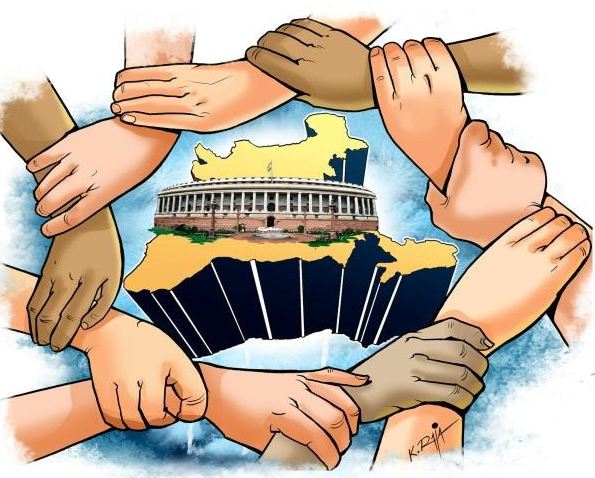Reimagining Indian Federalism: Strengthening State Autonomy and National Unity (GS Paper 2, Polity)

Context and Challenges
- In recent years, India's federal structure has faced significant challenges that threaten its balance and effectiveness.
- The return of coalition governance to New Delhi is seen as an opportunity to rejuvenate this structure, which has been under strain due to various factors including fiscal imbalances and demographic disparities among states.
Fiscal Federalism Issues
- One of the core issues undermining Indian federalism is the disruption in fiscal autonomy.
- Historically, India's federal structure aimed to distribute revenues in a manner that allowed states considerable autonomy in pursuing their development agendas.
- However, this balance has been upset by the introduction of cess on various goods and services.
- Unlike taxes, which contribute to the divisible pool of revenues shared between the center and states, cess collections do not feed into this pool, thereby reducing the fiscal flexibility of states and affecting their ability to address local priorities effectively.
- Moreover, the impending lapse of the 91st Amendment in 2026 poses another challenge.
- This amendment currently protects states that have made strides in demographic indicators (like gender empowerment and population control) by basing parliamentary constituencies on the 1971 Census data.
- The reluctance to extend this safeguard could lead to a new delimitation exercise based on more recent population data, potentially altering political representation significantly and raising concerns about fairness and representation.
Concerns of Southern States
- Southern states in India, while recognizing the need for addressing regional imbalances and supporting less developed states, express concerns about what they perceive as disproportionate fiscal burdens.
- States with higher literacy rates, better health indicators, and lower population growth often receive less in terms of fiscal devolution compared to states with higher developmental challenges.
- For instance, the significant disparity in tax devolution where Uttar Pradesh received more than all southern states combined highlights these concerns.
Revitalizing the Inter-State Council
- To address these challenges and restore faith in federal principles, there is a growing call to revitalize the Inter-State Council.
- Originally conceptualized under Article 263 of the Constitution and brought into operation based on recommendations by the Sarkaria Commission in the 1990s, the Council was intended to be a robust platform for states to discuss and resolve inter-state disputes, coordinate policies, and ensure cooperative federalism.
- However, over time, its authority and influence have waned, relegating it to a secondary role under the Ministry of Home Affairs.
- Reviving the Inter-State Council involves transforming it into an independent and authoritative body that serves as a forum for meaningful consultation, decision-making, and dispute resolution among states.
- By empowering the Council to deliberate on issues affecting states directly and involving various levels of government, it can become instrumental in fostering consensus and collaboration, thereby strengthening India's federal structure.
Conclusion
- In conclusion, reimagining Indian federalism requires addressing fiscal imbalances, ensuring equitable representation, and revitalizing mechanisms like the Inter-State Council.
- By safeguarding fiscal autonomy, ensuring fair representation through transparent delimitation exercises, and enhancing the role of institutions like the Inter-State Council, India can achieve a more balanced and effective federal governance system.
- This approach not only preserves unity amidst diversity but also ensures that all states contribute to and benefit from the nation's progress, thereby reinforcing the foundational principles of India's federal democracy.


